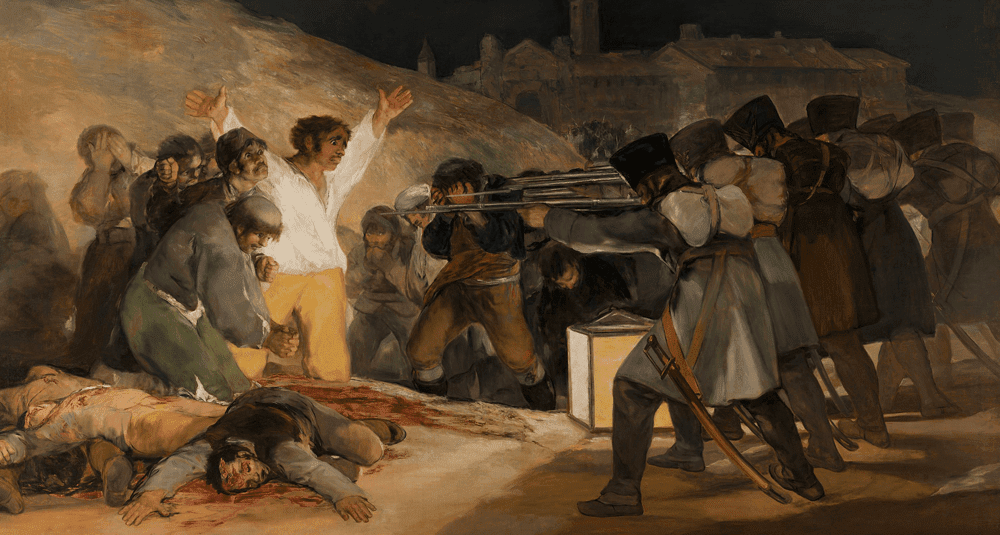To which war does Francisco de Goya’s The Third of May 1808 refer?
Last Updated:
The Third of May 1808, painted in 1814 by Francisco de Goya, is one of the Spanish painter’s most famous works, and a poignant depiction of the atrocities of the Spanish War of Independence. This conflict, which took place between 1808 and 1814, pitted Spanish forces, supported by the United Kingdom and Portugal, against the troops of Napoleon’s Empire occupying the Iberian Peninsula.
In 1808, Napoleon Bonaparte forced Spanish King Charles IV and his son Ferdinand VII to abdicate, placing his own brother, Joseph Bonaparte, on the Spanish throne. This decision provoked a massive revolt throughout the country, marked by a popular uprising in Madrid on May 2, 1808, known as the Dos de Mayo uprising.
The following day, May 3 1808, French troops brutally repressed the Spanish insurgents. Many Madrilenians were arrested and executed without trial. This bloody episode inspired Goya, who immortalized the scene in The Third of May 1808, a moving work denouncing the violence of the French occupation.
The Third of May 1808 depicts the tragic moment when a group of anonymous Spaniards are gunned down by French soldiers. Goya’s dramatic composition reinforces the emotional intensity of the scene.
In the foreground, a man dressed in white, arms raised in submission, embodies innocence and resistance in the face of injustice. His terrified face contrasts with the impassivity of the soldiers, whose faces are hidden, reducing them to mere instruments of repression.
The dramatic lighting, from a lantern on the ground, highlights the victims and accentuates the tension. In the background, Madrid appears in darkness, suggesting a city trapped in chaos and occupation.
With The Third of May 1808, Goya revolutionized historical painting, abandoning the glorification of battles in favor of a brutal denunciation of the horrors of war. Unlike classical painters, who depicted conflicts from a heroic angle, he chose here to show the suffering of anonymous victims.
The painting also marks a transition to more expressive modern painting, influencing artists such as Édouard Manet with his painting The Execution of Maximilian (1868) and Pablo Picasso, notably in Guernica (1937), which denounces the bombings of the Spanish Civil War.
Painted in 1814, after the liberation of Spain and the return of Ferdinand VII to the throne, Goya’s work remains a universal symbol of revolt against oppression. Today housed at the Prado Museum in Madrid, it continues to be studied as a major reference for committed art and a poignant testimony to the violence of war.
Francisco de Goya’s The Third of May 1808 is a direct reference to the Spanish War of Independence, and in particular to the executions of Madrid insurgents by Napoleonic troops in 1808. This powerful, revolutionary work marks a turning point in painting, heralding modern art and serving as a model for numerous artistic representations of war and repression.
arts

To which war does Francisco de Goya's The Third of May 1808 refer?
Answer
Francisco de Goya's painting The Third of May 1808 refers to the Spanish War of Independence (1808-1814), which pitted Spain against Napoleon's occupation.